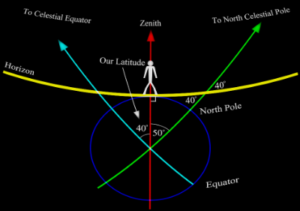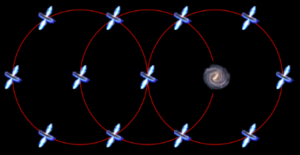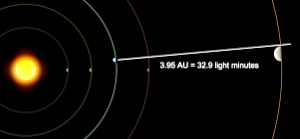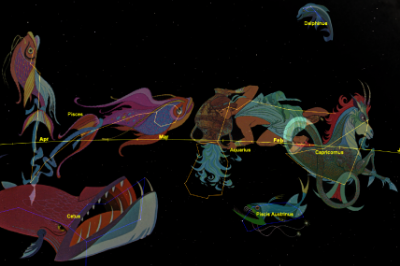I’m excited to announce that Volume 3 of the Spitz Fulldome Curriculum is being released to all SciDome users, and will of course be automatically incorporated into all future SciDome installations. We thought that this would be an opportune time to give a very brief overview of what’s contained in this volume. There are several revisions to previous minilessons as well as several all new offerings:
Galilean Moons
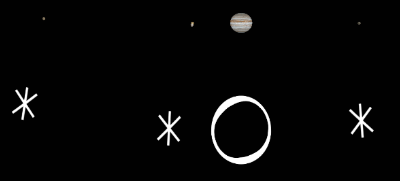 This minilesson gives 26 examples (in order of date) of Galileo’s first observations of the four major moons of Jupiter during the winter of 1610. The actual configuration of each night is beautifully displayed on the dome by Starry Night and then Galileo’s sketch is presented directly underneath it so that your audience can compare the sketch to reality. You will be astonished at Galileo’s accuracy, as well as the restrictions of his poor optics and resolution that confined his work. My students enjoy these comparisons even more than I do!
This minilesson gives 26 examples (in order of date) of Galileo’s first observations of the four major moons of Jupiter during the winter of 1610. The actual configuration of each night is beautifully displayed on the dome by Starry Night and then Galileo’s sketch is presented directly underneath it so that your audience can compare the sketch to reality. You will be astonished at Galileo’s accuracy, as well as the restrictions of his poor optics and resolution that confined his work. My students enjoy these comparisons even more than I do!
North Celestial Pole (NCP) Altitude
My students always scratch their heads when presented with the idea that the North Celestial Pole is always the same number of degrees above your horizon as your latitude. This series of overlaying diagrams attempts to clearly lay out exactly why this is the case.
Planetary Tilts
Steve Sanders, Observatory Administrator at Eastern University and my right hand man, came up with this idea to beautifully illustrate the various planetary axis tilts side by side as well as their rotation periods. This animation is so impactful that the folks at ViewSpace used it in one of their presentations last year!
Quasars Fulldome
This is one of my all time favorite mind-blowing demonstrations! In a series of overlaying fulldome illustrations (again created by Steve Sanders), the second cosmological principle of the universe looking the same everywhere is demonstrated by using the appearance of quasars as seen from any galaxy, starting from the Milky Way. Your audience will be left awestruck when they discover that the Milky Way is a quasar as seen by a distant galaxy which to us looks like a quasar!
Roemer’s Method Revised
One of my favorite minilessons from Volume 1, we’ve revised this presentation with a new animation by Steve Sanders which very clearly shows the concept behind the light time effect and how Roemer was the first to demonstrate that the speed of light was finite and approximate its value. You can not only show this effect to your audience but make an incredibly precise and straightforward measurement from it of the speed of light!
Solar System Scale Revised
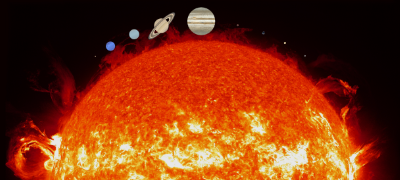 I still use this minilesson in nearly every one of my presentations and for all ages. We have greatly improved the graphics used in this minilesson and I know you will like the results!
I still use this minilesson in nearly every one of my presentations and for all ages. We have greatly improved the graphics used in this minilesson and I know you will like the results!
Stellar Sizes Revised
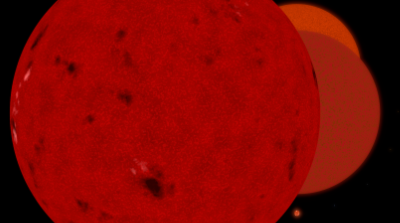 Like Solar System Scale, I use this minilesson frequently in most of my presentations, and we’ve revised it by adding a final graphic at the end which shows VY Canis Majoris in its entirety on the dome in one final scale shift.
Like Solar System Scale, I use this minilesson frequently in most of my presentations, and we’ve revised it by adding a final graphic at the end which shows VY Canis Majoris in its entirety on the dome in one final scale shift.
Synodic Periods of Mercury, Venus, Mars and Jupiter
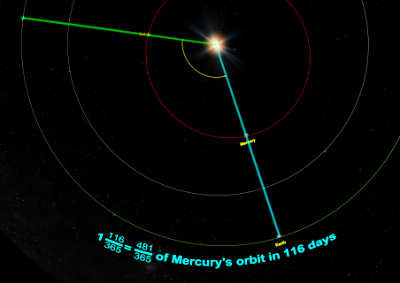 These are my favorite new additions in Volume 3! Each is a separate minilesson and carefully steps the audience through how Copernicus disentangled synodic periods of the planets into their sidereal periods around the Sun! Although very few people have ever been taught this concept, it’s very straightforward and illuminating when you see it on the dome. Test one out for yourself and you’ll be hooked!
These are my favorite new additions in Volume 3! Each is a separate minilesson and carefully steps the audience through how Copernicus disentangled synodic periods of the planets into their sidereal periods around the Sun! Although very few people have ever been taught this concept, it’s very straightforward and illuminating when you see it on the dome. Test one out for yourself and you’ll be hooked!
Titius-Bode Rule
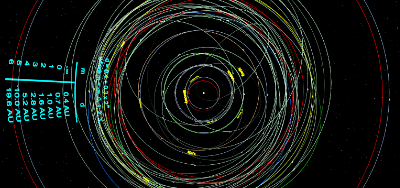 We often mention this infamous “Law” in our astronomy classes, so I wanted to present it in a historical fashion to demonstrate what effect it had on astronomer’s thinking when the Solar System was being explored and new planets being discovered. It’s the perfect example of a mathematical oddity that may or may not be scientifically meaningful. I think you will find it a fascinating subject as presented on the dome in this minilesson!
We often mention this infamous “Law” in our astronomy classes, so I wanted to present it in a historical fashion to demonstrate what effect it had on astronomer’s thinking when the Solar System was being explored and new planets being discovered. It’s the perfect example of a mathematical oddity that may or may not be scientifically meaningful. I think you will find it a fascinating subject as presented on the dome in this minilesson!
Watery Constellations
This little minilesson playfully depicts the fact that the region of the sky known as “The Sea” by the ancients has water-related constellations residing in it for a specific reason, namely that the Sun traversed this part of the sky during the rainy season in the Mediterranean. You will also be able to show your audience in a natural way that the position of the winter solstice used to be in Capricorn around 1000 BC, and hence that latitude parallel is called the Tropic of Capricorn.
Perhaps the greatest contribution to the official contents of Volume 3 is the availability of three unique fulldome interactive programs: Epicycles, Newton’s Mountain, and Tides. These three programs allow you to clearly demonstrate subjects which I have found extremely challenging for my students:
- Epicycles shows many of the intricacies and systematics of the simplified Ptolemaic geocentric system and will alert your audiences to the vagaries of “saving the model at any cost.”
- Newton’s Mountain is a 21st century interactive version of Newton’s attempt to explain exactly what an orbit is allowing you to show your audience in real time different orbits as a cannonball literally falls around the Earth.
- Tides shows exactly why the Moon causes the water to bulge on either side of the Earth via differential gravitational forces as well as demonstrating that the bulge is not the same on both sides!
REQUIRES WINDOWS 7 ON THE RENDERBOX COMPUTER. Multi-projector systems must be based on Scaleable – not compatible with EasyBlend.
These three programs require purchase because of the many years of work which went into their development and implementation. They are now available for online purchase and immediate download:
I hope that you and your audiences thoroughly enjoy this latest addition to the Fulldome Curriculum, and that they will be helpful as you continue to strive to educate people in the subjects that we all love.

